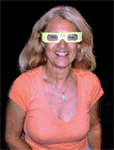 Transplanting myself from New York to California in 1966 was a profound shock. The music disoriented me most:my East Coast songs were displaced by groups I had never heard of: Buffalo Springfield, Big Brother, The Youngbloods. Where were The Four Seasons? Radio stations began with “K,” not “W.” My internal compass was useless, so I learned to love the new music.
Transplanting myself from New York to California in 1966 was a profound shock. The music disoriented me most:my East Coast songs were displaced by groups I had never heard of: Buffalo Springfield, Big Brother, The Youngbloods. Where were The Four Seasons? Radio stations began with “K,” not “W.” My internal compass was useless, so I learned to love the new music.
Home for Christmas, I forced friends to listen to LPs I dragged back with me. With a newlyconverted pal, I drove around Manhattan that December, ’66, leaning out the car window, asking people from Times Square down to the Village “Who’s Janis Joplin?”. Not one person knew.
If LA’s Sunset Strip — the mile between two music clubs, Pandora’s Box and The Whiskey — was a holy place, then ‘Frisco was Heaven itself, and at the core was rebellion and music. Young men burned their draft cards and women burned their bras. I helped organize a women’s protest in early ’67, more because I didn’t want to get thrown out of school for doing what we wanted to than because of abstract women’s lib. Having too much fun (as Commander Cody wrote) to follow the old rulebook, we began re-writing the rules, including the ones about music.
Songs were no longer three minutes, or distinctly separate on an album, or played note-fornote in concert; in fact, controlled behavior on stage flew out the window in about six months. The Mothers of Invention, Jimi Hendrix, and The Doors turned our notion of what groups should act and sound like on its head. Rock music vaulted from Diana Ross to her polar opposite, Janis Joplin, in the blink of an eye. Ultracool, black-turtlenecked beatniks skulking in dark acoustic coffeehouses morphed into screaming, rainbow-decked hippies who stripped naked in fields, who electrified and amplified every instrument they could lay their hands on, then devised new instruments and bigger speakers.
Achieving critical mass of like-minded talent is certainly part of brewing a renaissance. Creative, inventive, and free-spirited individuals — mostly, but not exclusively, young — poured into San Francisco, inhabiting the streets, partying in parks, painting the sidewalks and each other, handing out flowers and panhandling, selling homemade beads and dope, and playing music incessantly. Everyone I know who lived through that period has at least one story that begins “I saw [insert the name of a major group] open for [insert another major group here] in a club with maybe 400 people?.” There were fabulous acts everywhere, often for free.
The music scene ebbed and flowed with politics. Rolling Stone began publication in SF in 1967 (circulation 6,000), and Monterey Pop was that June. Martin Luther King, Jr. and Robert Kennedy were assassinated two months apart in 1968. I was in a nearby LA pool hall, listening to a 45 of the newly-released “Brown Sugar” and its B-side, “Jumpin’ Jack Flash, “when we heard the sirens. Woodstock, probably the apex of the ’60s, was August of ’69, but Altamont, with three dead and hundreds wounded, whacked us not six months later. Kent State was May of 1970; Jimi Hendrix died that September, Janis Joplin the following month. Jim Morrison vanished from this earth July 3, 1971, the same week The Fillmores West and East closed their doors. Nixon buried liberal George McGovern in the November ’72 election, announced the end of the Vietnam war in January, 1973, and resigned August of ’74. Things happened fast, and there was always that soundtrack, always the music, keeping us in the moment then, and bringing us back to those times today.
When I moved to SF full-time in 1971, the bloom was already off the rose. Increasingly, The Haight boasted more junkies than recreational drug users; the racial climate hardened significantly, alienating flower children and moderates. Tricky diseases from Vietnam made free love costly, and certain people under thirty were not to be trusted. In 1971 Charles Manson was finally convicted and Werner Ehrhart held his first EST seminar. The youth mentality was inexorably shifting from “us” to “me.”
The renaissance is over but the legacy remains. Like pentimento, the San Francisco phenomenon will never completely disappear; thankfully, it lives in music.
—Suzanne Cadgène



Be the first to comment!